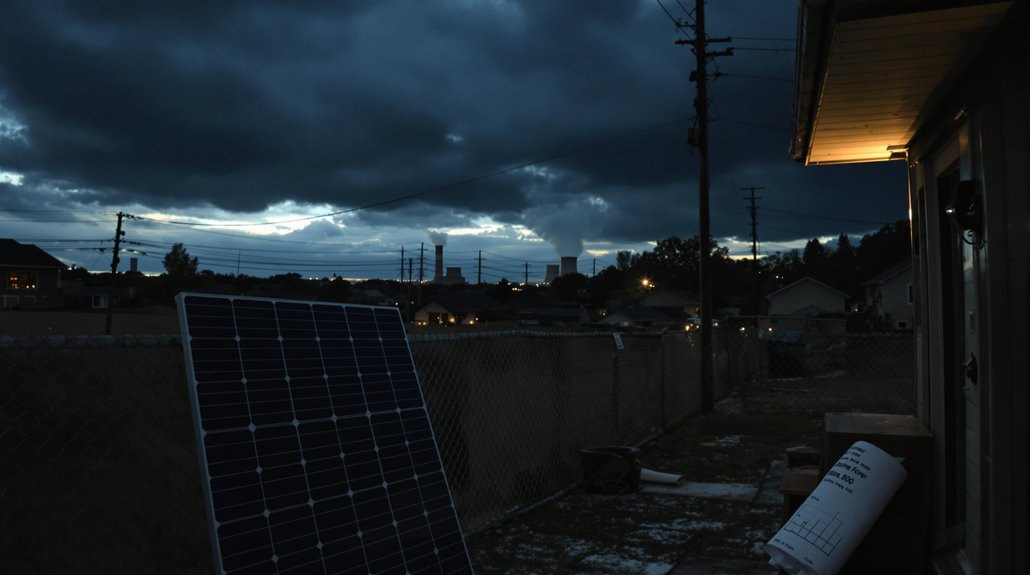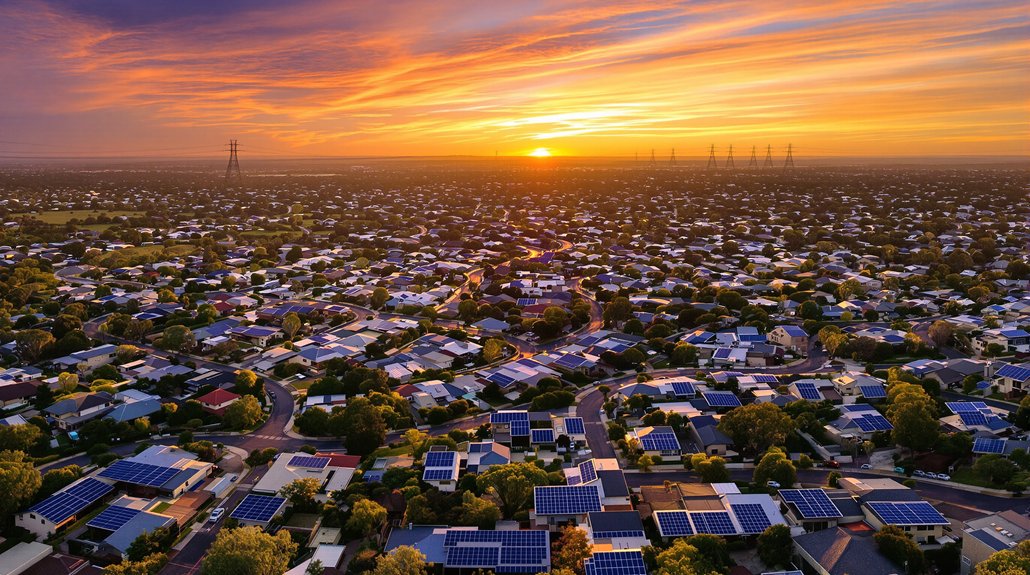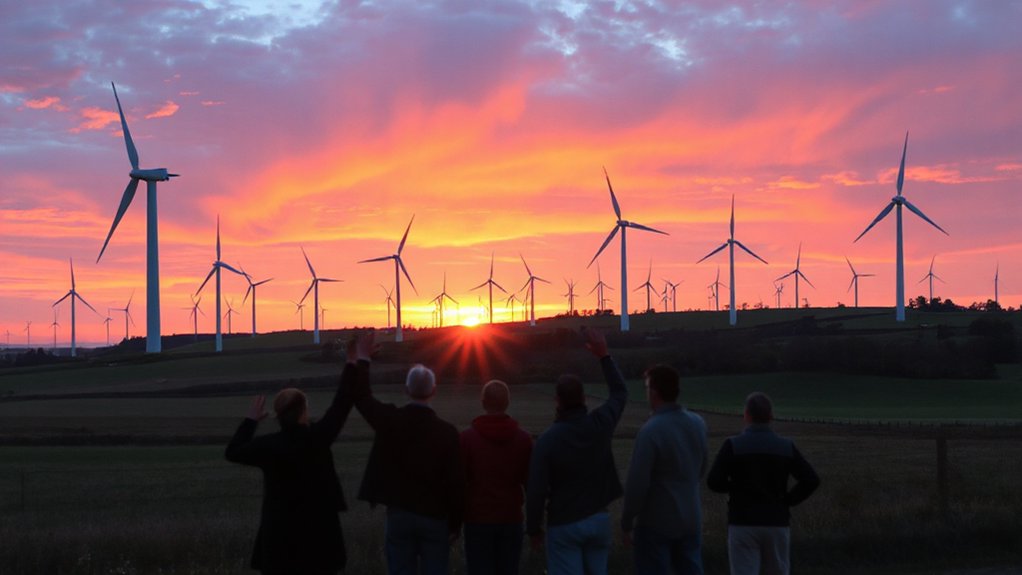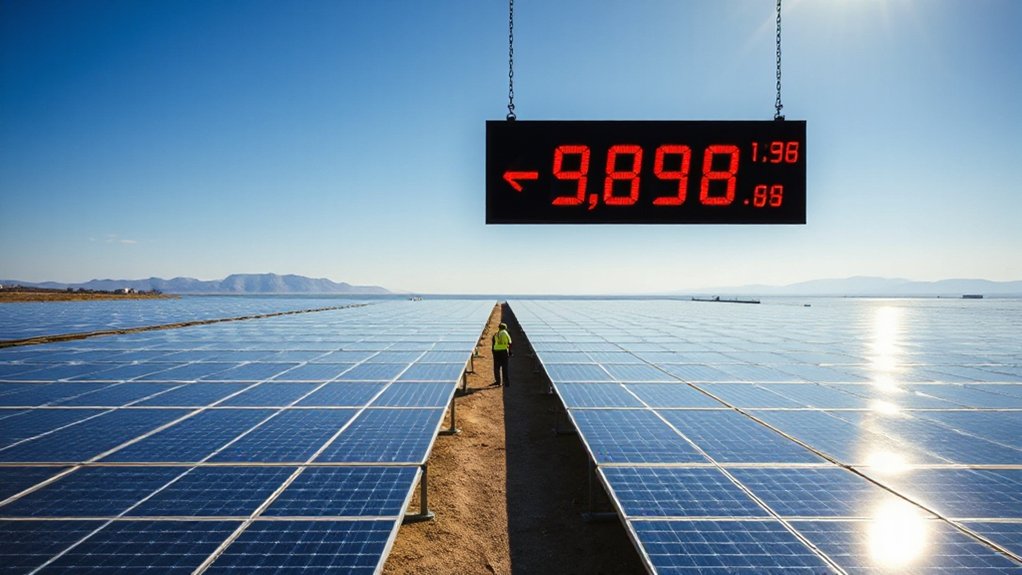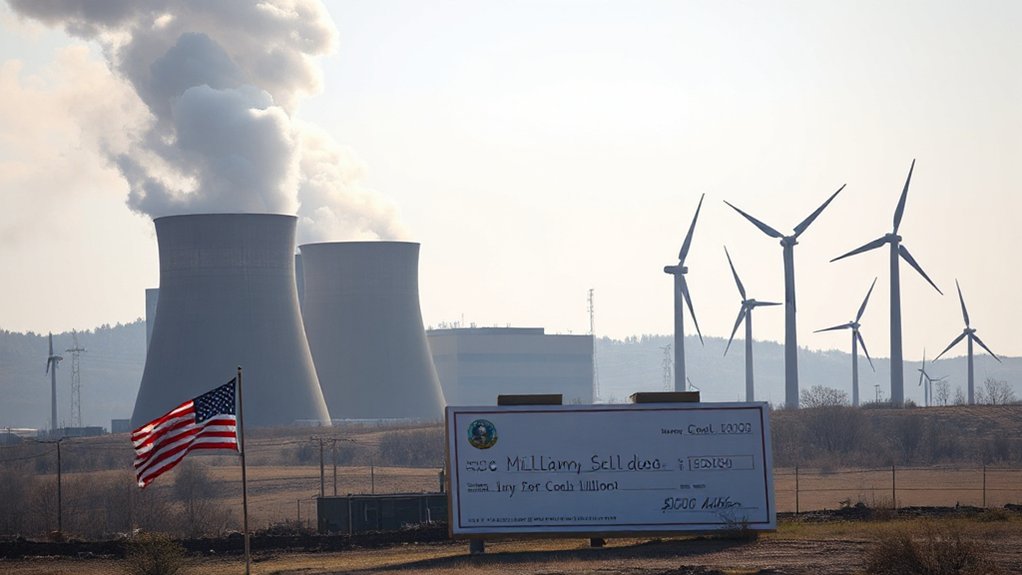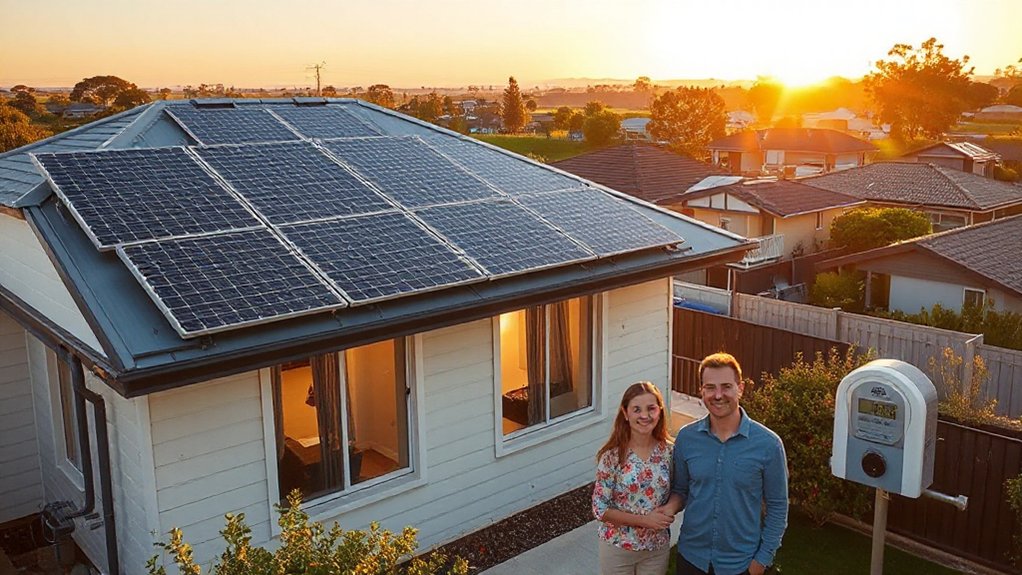Recent reports show that even green energy supporters acknowledge significant challenges with solar and wind power. These renewable sources face reliability issues due to limited storage capacity, inconsistent output, and the need for fossil fuel backups. Environmental concerns include habitat destruction and bird deaths, while economic challenges involve higher costs and infrastructure problems. Many communities oppose large renewable projects that consume farmland and forests. Further exploration reveals complex trade-offs in the shift to clean energy.
After years of championing renewable energy solutions, prominent environmental activist James Thornton has publicly acknowledged the significant challenges facing the green energy movement. In a surprise statement last week, Thornton pointed to power storage issues as a major obstacle, noting that solar and wind’s inconsistent output still requires fossil fuel plants to remain on standby.
“We can’t ignore the land use problems anymore,” Thornton admitted during a climate conference. Large solar and wind farms often lead to deforestation and take up space that could be used for farming. The infrastructure needed to transmit this energy is costly and faces many logistical challenges.
Wildlife concerns have also emerged as a serious issue. Wind turbines cause bird deaths, while large solar installations destroy natural habitats. Additionally, the mining of critical minerals needed for green energy systems brings its own environmental and social problems.
Environmental protection efforts face growing ironies as renewable energy infrastructure impacts the very wildlife and habitats it aims to save.
Economic factors are proving problematic as well. Studies from New England show that a complete shift to renewable energy could double energy bills. Many renewable projects face legal battles and financial opposition, causing delays that drive up costs. The subsidies these projects require can burden government budgets and particularly affect those with lower incomes.
Battery storage, essential for consistent power from renewable sources, remains expensive. The United States has a massive generation capacity of 12,000 gigawatts but only 25 gigawatts of storage. This makes it harder for renewables to compete with existing fossil fuel systems, which are often cheaper to maintain and operate. Even the best lithium-ion storage systems can only return 80-90% efficiency when converting stored energy back to electricity.
Local communities frequently oppose renewable projects. Jason Grumet of the American Clean Power Association has consistently argued that current permitting laws impede renewable energy development, creating significant barriers for new clean energy projects. Residents worry about losing farmland, forests, and disruption to local ecosystems. Many file legal challenges and petitions to block these developments, citing concerns about corporate control and lack of community input in the decision-making process.
Regulatory hurdles present additional challenges. Permitting processes are slow, and current policies often favor established energy systems. The frameworks in place don’t adequately address the intermittent nature of renewable power, leaving many regions dependent on fossil fuel backups when the sun isn’t shining or the wind isn’t blowing.




